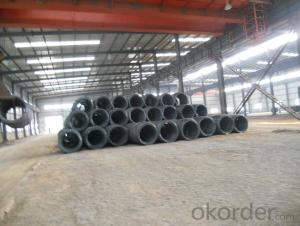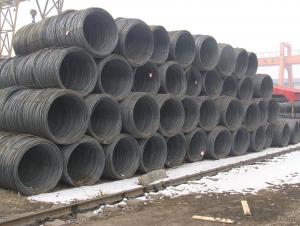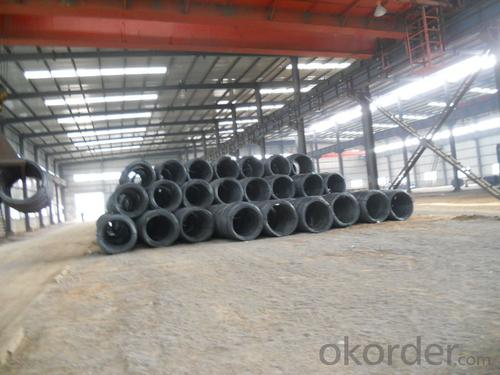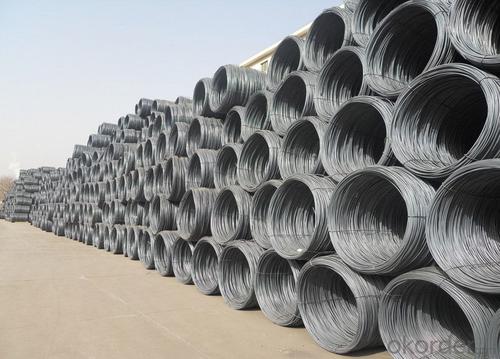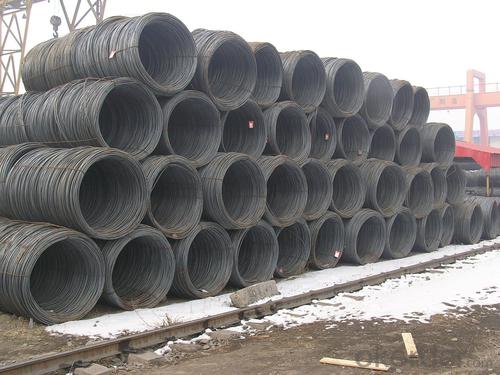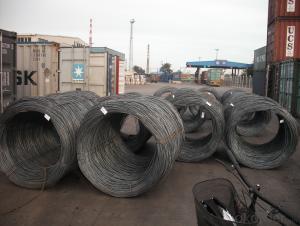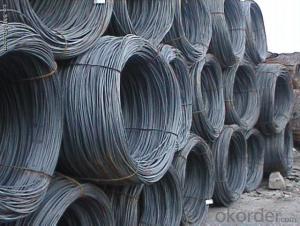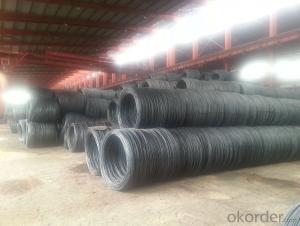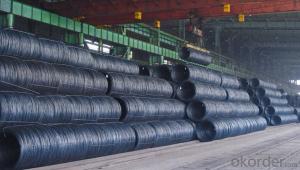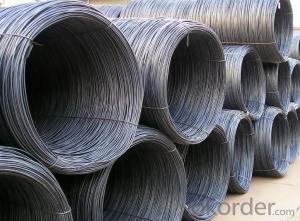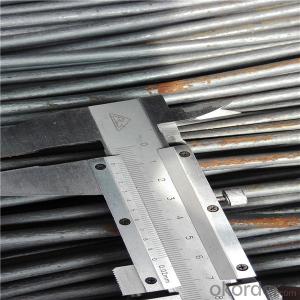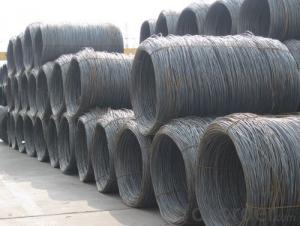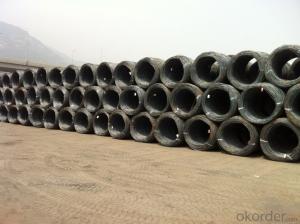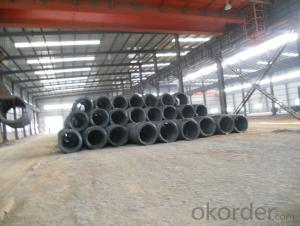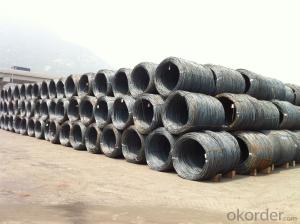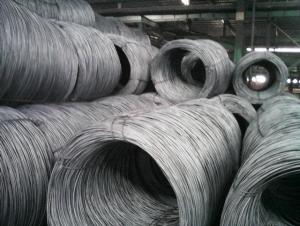Hot Rolled Prime Steel Wire Rod in Coils
- Loading Port:
- China main port
- Payment Terms:
- TT OR LC
- Min Order Qty:
- 100 m.t.
- Supply Capability:
- 10000 m.t./month
OKorder Service Pledge
OKorder Financial Service
You Might Also Like
Specification
Product Description:
OKorder is offering Prime Hot Rolled Steel Wire Rod in Coils at great prices with worldwide shipping. Our supplier is a world-class manufacturer of steel, with our products utilized the world over. OKorder annually supplies products to African, South American and Asian markets. We provide quotations within 24 hours of receiving an inquiry and guarantee competitive prices.
Product Applications:
Prime Hot Rolled Steel Wire Rod in Coils are ideal for structural applications and are widely used in construction and manufacturing. Carbon steel wire rod is mainly used for reinforcement of reinforced concrete and welded structure or reprocessed (roberts , nail, etc.) materials, especially used to produce wire drawing, welding electrode, nails, spring, electronic, precise machinery parts and so on.
Product Advantages:
OKorder's Prime Hot Rolled Steel Wire Rod in Coils are durable, strong, and wide variety of sizes.
Main Product Features:
· Premium quality
· Prompt delivery & seaworthy packing (30 days after receiving deposit)
· Can be recycled and reused
· Mill test certification
· Professional Service
· Competitive pricing
Product Specifications:
Manufacture: Hot rolled
Grade: HRB400,HRB400E,HRB500
Certificates: ISO, SGS, BV, CIQ
Packaging: Export packing, nude packing, in coils, each coil around 2mt
Size: 5.5mm, 6.5mm, 8mm, 10mm
Grade | Chemical Composition(%) | |||||
C | Mn | Si | S | P | B | |
SAE1006B | 0.03~O.07 | ≤0.32 | ≤0.30 | ≤0.045 | ≤0.040 | >0.0008 |
Mechanical properties | ||||||
Yield strength(N/mm2) | Tensile strength(N/mm2) | Elongation(%) | ||||
250-280 | 350-380 | ≥32 | ||||
Grade | Chemical Composition(%) | |||||
C | Mn | Si | S | P | B | |
SAE1008B | 0.10max | 0.3~O.50 | 0.15max | 0.050max | 0.040 max | 0.0008 min |
Mechanical properties | ||||||
Yield strength(N/mm2) | Tensile strength(N/mm2) | Elongation(%) | ||||
FAQ:
Q1: Why buy Materials & Equipment from OKorder.com?
A1: All products offered byOKorder.com are carefully selected from China's most reliable manufacturing enterprises. Through its ISO certifications, OKorder.com adheres to the highest standards and a commitment to supply chain safety and customer satisfaction.
Q2: How do we guarantee the quality of our products?
A2: We have established an advanced quality management system which conducts strict quality tests at every step, from raw materials to the final product. At the same time, we provide extensive follow-up service assurances as required.
Q3: How soon can we receive the product after purchase?
A3: Within three days of placing an order, we will arrange production. The normal sizes with the normal grade can be produced within one month. The specific shipping date is dependent upon international and government factors, the delivery to international main port about 45-60days.
Images:
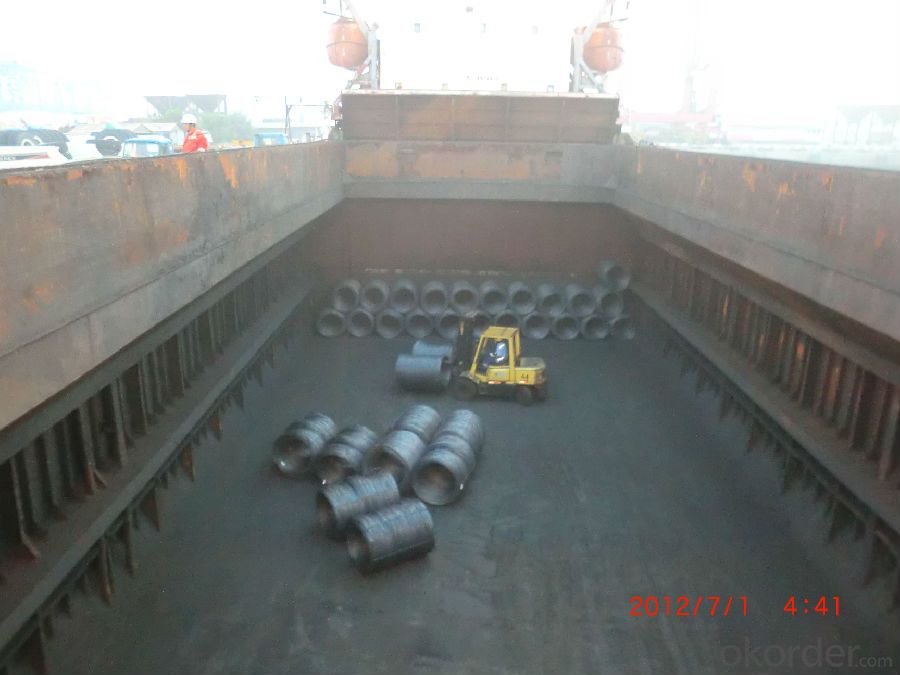
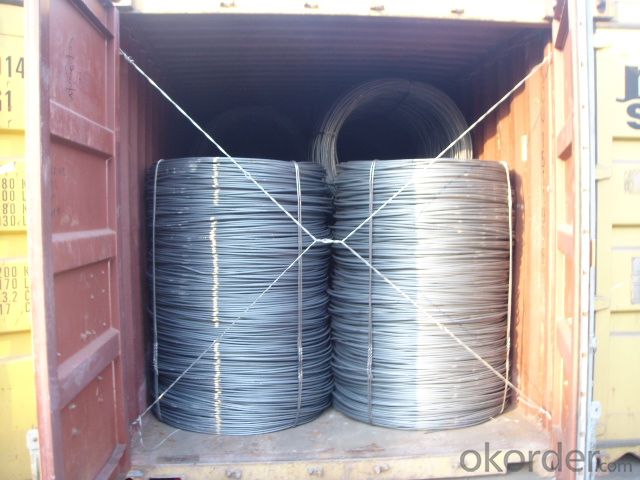
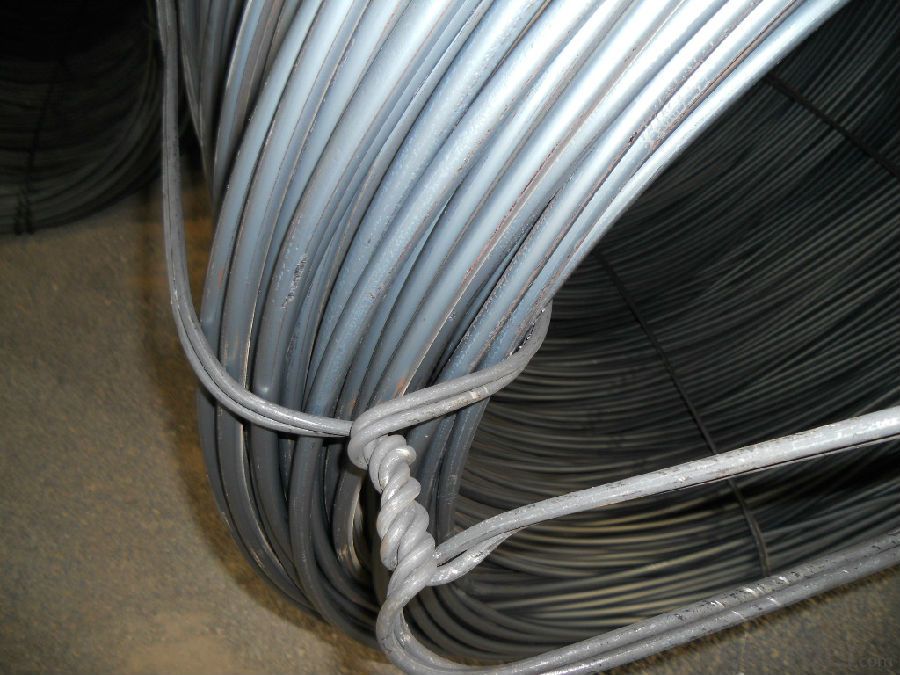
- Q: How are steel wire rods used in the production of electrical wires for conducting electricity?
- Steel wire rods are used in the production of electrical wires as the core material for conducting electricity. The rods are drawn through a series of dies to reduce their diameter and increase their length. This process, known as wire drawing, creates a smooth and uniform wire that is then coated with an insulating material, such as PVC or rubber, to ensure electrical safety. The resulting electrical wire is flexible, durable, and capable of efficiently transmitting electricity without any significant loss.
- Q: How is steel wire rod used in the production of wire brushes?
- Steel wire rod is used in the production of wire brushes as it serves as the main material for the bristles. The wire rod is shaped, cut, and twisted to create the bristles that are then attached to the brush's base or handle. The strength and durability of steel wire make it ideal for wire brushes, allowing them to effectively remove dirt, debris, and rust from various surfaces.
- Q: How is steel wire rod used in the manufacturing of wire partitions?
- Steel wire rod is used in the manufacturing of wire partitions as it serves as the primary material for creating the sturdy framework of the partitions. The wire rod is processed and shaped into various gauges and lengths, which are then welded or woven together to form the grid-like structure of the partitions. This structure provides strength, durability, and security to the wire partitions, making them ideal for use in industrial and commercial settings.
- Q: What are the common production processes for berkelium-coated steel wire rod?
- The common production processes for berkelium-coated steel wire rod typically involve a combination of several steps. These may include cleaning and pre-treatment of the steel wire rod to remove impurities and create a suitable surface for coating. Then, a berkelium coating is applied to the wire rod using techniques such as electroplating or physical vapor deposition. The coated wire rod is then subjected to various quality control measures to ensure the desired berkelium coating thickness and uniformity. Finally, the wire rod may undergo further processing steps like annealing or heat treatment to enhance its mechanical properties before it is ready for use in various applications.
- Q: What are the common raw materials used in steel wire rod production?
- The common raw materials used in steel wire rod production are iron ore, coal, limestone, and scrap metal.
- Q: How is steel wire rod used in the manufacturing of suspension cables?
- Steel wire rod is used in the manufacturing of suspension cables as it provides strength, durability, and flexibility required to support heavy loads and withstand tension and compression forces. It is commonly used as the core material for suspension cables, as it is capable of bearing the weight of the structure and maintaining its stability. Additionally, steel wire rod is often galvanized to increase its resistance to corrosion, ensuring the longevity of the suspension cables in various environmental conditions.
- Q: How does the brittleness of steel wire rod vary with different heat treatment processes?
- The brittleness of steel wire rod can vary significantly with different heat treatment processes. Generally, the more rapid the cooling process, the more brittle the steel becomes. For example, quenching, which involves rapidly cooling the steel, can increase its brittleness. On the other hand, processes like annealing, which involves slow cooling, can reduce brittleness and improve the steel's ductility. Therefore, the specific heat treatment process used plays a crucial role in determining the brittleness of steel wire rod.
- Q: How are steel wire rods used in the production of electrical wires for conducting electricity?
- Steel wire rods are an essential component in the production of electrical wires for conducting electricity. These wire rods serve as the core material around which the electrical wires are manufactured. To begin with, the steel wire rods are carefully selected for their high tensile strength and conductivity properties. This ensures that the resulting electrical wires are strong, durable, and efficient in conducting electricity. The first step in the production process involves drawing the steel wire rods through a series of dies to reduce their diameter. This process is known as wire drawing and is used to achieve the desired thickness and shape of the electrical wire. By reducing the diameter, the wire becomes more flexible and easier to handle during installation. Once the wire rods have been drawn to the required size, they are then coated with a layer of insulating material. This insulation is crucial for preventing electrical leakage, short circuits, and protecting against external factors that may damage the wire. Common insulation materials used include PVC (polyvinyl chloride), XLPE (cross-linked polyethylene), or rubber. After the insulation process, the wire rods are further processed to include any necessary additional features. For instance, they may be twisted together to form multi-conductor cables, or copper strands may be added to enhance the wire's conductivity. These additional steps are performed based on the specific requirements of the electrical wire. Finally, the wire rods are wound onto spools or coiled into reels, ready to be used in various electrical applications. These can range from domestic wiring systems to industrial power distribution networks. In summary, steel wire rods play a vital role in the production of electrical wires. They provide the core material around which the wires are manufactured, ensuring strength, durability, and efficient conductivity. Through wire drawing, insulation, and other processing steps, the wire rods are transformed into high-quality electrical wires that are essential for conducting electricity safely and effectively.
- Q: What are the common production processes for americium-coated steel wire rod?
- The common production processes for americium-coated steel wire rod typically involve a series of steps. First, the steel wire rod is manufactured through processes such as hot rolling or cold drawing to obtain the desired dimensions and characteristics. Next, the americium coating is applied onto the steel wire rod using methods such as electrodeposition or physical vapor deposition. This ensures a uniform and adherent coating of americium on the surface of the steel wire rod. Finally, the coated wire rod is subjected to quality control checks and may undergo additional treatments or processing, depending on the intended application.
- Q: What is the typical chemical composition of steel wire rod?
- The typical chemical composition of steel wire rod consists primarily of iron, carbon, and small amounts of other elements such as manganese, silicon, and sulfur.
Send your message to us
Hot Rolled Prime Steel Wire Rod in Coils
- Loading Port:
- China main port
- Payment Terms:
- TT OR LC
- Min Order Qty:
- 100 m.t.
- Supply Capability:
- 10000 m.t./month
OKorder Service Pledge
OKorder Financial Service
Similar products
Hot products
Hot Searches
Related keywords
